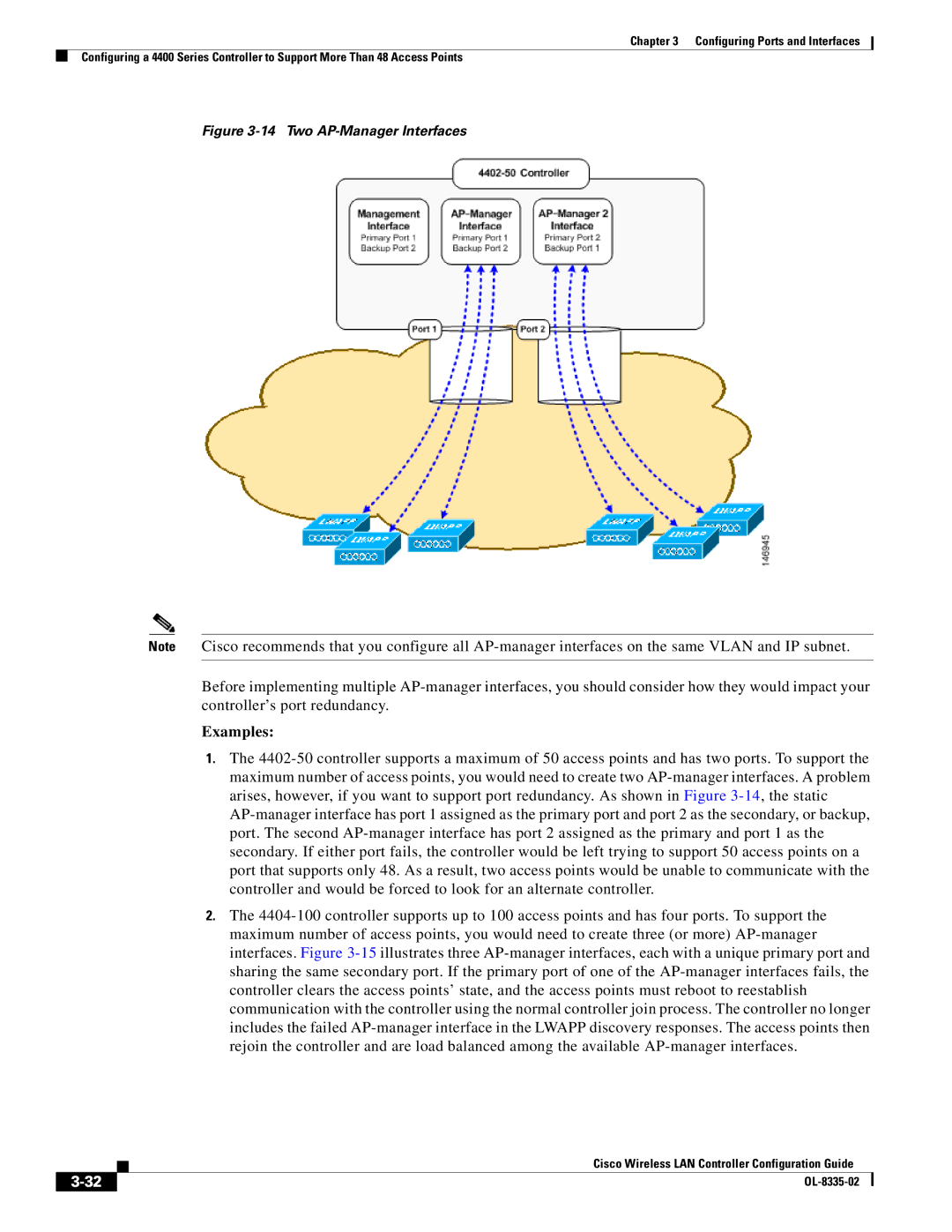
Chapter 3 Configuring Ports and Interfaces
Configuring a 4400 Series Controller to Support More Than 48 Access Points
Figure 3-14 Two AP-Manager Interfaces
Note Cisco recommends that you configure all
Before implementing multiple
Examples:
1.The
2.The
Cisco Wireless LAN Controller Configuration Guide
| ||
|
